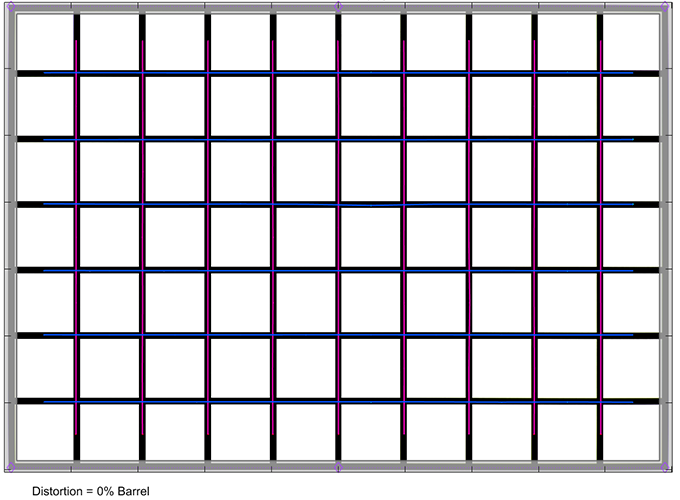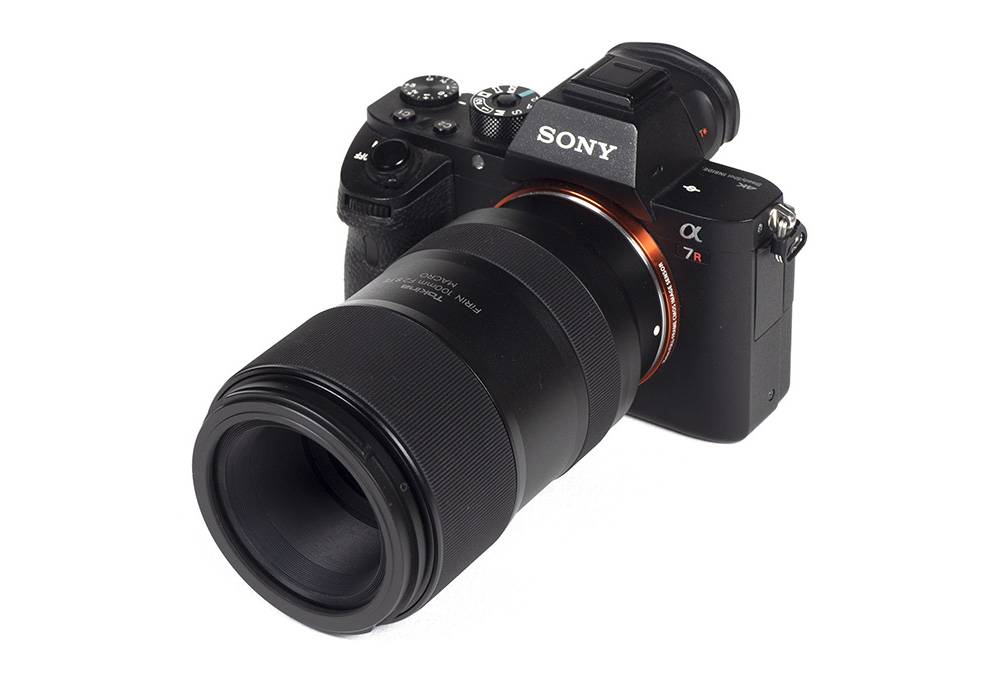by Klaus Schroiff, published August 2019
Introduction
One of the biggest controversials around mirrorless camera systems are the comparatively inflated lens prices. A contributing factor to this is surely the lack of competition from third-party manufacturers that are abundant in the DSLR world but not really established in the mirrorless arena – yet. While CaNikon are playing their usual proprietary game, Sony is a little more open – thus the mount(-protocol) can actually be licensed.
The classic three independent manufacturers – Sigma, Tamron and Tokina – are now happily taking advantage of the opportunity and we are now seeing more affordable lenses for Sony (F)E-mount. One of them is the Tokina FíRIN 100mm f/2.8 FE macro. The comparable Sony FE 90mm f/2.8 OSS macro is available for around 1000USD/EUR whereas the Tokina is priced under 600EUR/USD. Of course, this raises the question of whether Tokina had to cut corners in order to achieve a 40% lower price tag.
In terms of construction quality, the Tokina does surely not disappoint. The lens body is made of a tightly assembled combination of metal and high-quality plastic parts. When looking at the product images below you may notice two rubberized rings. The bigger one at the front is used for manual focusing whereas the rear one is “cosmetic” – or to phrase it differently: it makes the lens more grippy. Typical for most albeit not all macro lenses, there’s an inner lens tube that extends when focusing towards close-focus distances.
It is worth mentioning that the optical design itself is actually not new – it is based on the classic Tokina AF 100mm f/2.8 AT-X Pro macro (for DSLRs that is). However, unlike on some Sigma lenses, that’s not really obvious from the outside. The lens is not any longer than Sony’s 90mm f/2.8 macro lens so it doesn’t “feel” alien. A barrel-shaped lens hood is part of the package.

The AF speed is clearly on the slow side which can be annoying if the camera decides to hunt through the focus range. A focus limiter would have been a good idea but Tokina decided against this. The AF motor is also emitting some noise – albeit on a subtle level.
Manual focusing works Okay but it is slightly coarse in terms of micro-focusing steps. To be fair, however, we had no issues with this during our testing (which requires a lot of focus fine-tuning).
It’s worth noting that the lens is fully compatible with DMF as well as Sony’s in-body image stabilization system.
| Specifications | |
|---|---|
| Optical construction | 9 elements in 8 groups |
| Number of aperture blades | 9 (rounded) |
| min. focus distance | 0.3m (max. magnification ratio 1:1) |
| Dimensions | 74x123mm |
| Weight | 570g |
| Filter size | 55mm |
| Hood | barrel-shaped (bayonet mount, supplied) |
| Other features | – |
| Mount | Sony FE |
Distortion
One of the advantages of re-using a DSLR design is the fact that these lenses are not quite as relying on digital image auto-correction.
The Tokina FíRIN 100mm f/2.8 FE macro is actually pretty much perfect in terms of image distortion.

Vignetting
The light falloff is very moderate for a full format lens. The uncorrected vignetting is visible at f/2.8 albeit it’s far from being extreme here. Stopping down to f/4 reduces the issue and it’s no longer relevant from f/5.6 onward. It’s interesting that Tokina doesn’t take too much advantage of the auto-correction option. With activate auto-correction, the light falloff is just slightly lower at large-aperture settings.

MTF (resolution)
In terms of resolution, the Tokina FíRIN 100mm f/2.8 FE macro has two souls. The broader center performance is pretty much outstanding straight from f/2.8 whereas the borders/corners aren’t overly impressive. Stopping down to f/4 or f/5.6 maintains the great center quality. The outer image region improves only slightly. The best overall performance is reached around f/8 with good to very good borders and good corners. Diffraction effects are, as always, substantial at f/16 and heavy at f/22 thus unless you need the additional depth-of-field you should avoid these settings.
The field curvature is low – as you expect from a macro lens.
Please note that the MTF results are not directly comparable across the different systems!
Below is a simplified summary of the formal findings. The chart shows line widths per picture height (LW/PH) which can be taken as a measure for sharpness. If you want to know more about the MTF50 figures you may check out the corresponding Imatest Explanations

Chromatic Aberrations (CAs)
Lateral CAs are on a moderate level with an average CA pixel width of around 1.4px at the image borders. In critical scenes, you may spot this.

Unfortunately, there’s an aspect that has been carried over from the Tokina AF 100mm f/2.8 AT-X Pro macro – purple fringing (PF). PF is a blooming effect at extreme contrast transitions where adjacent pixels are saturated with … well … purple (really more violet in this case). Below (to the left) is an example crop where you can spot the effect. This is primarily an issue at f/2.8. Stopped down (as shown to the right), the fringing is gone.

Bokeh
When using a macro lens in its natural habitat, you are basically always operating with a very shallow depth-of-field. As such, the quality of the bokeh (rendering of the out-of-focus blur) is a rather critical characteristic.
The good news is that the Tokina FíRIN 100mm f/2.8 FE macro is excellent in this respect.
Out-of-focus highlights are nicely rendered with a very smooth inner disk. The circular shape of the discs is maintained at f/4 and the edgy aperture shape is just visible from f/5.6 onward.

If we have a more detailed, look at an isolated & emphasized highlight, you may spot that the outer rim is actually decreasing in brightness which is the reason for the smoothness.

The general rendering of the blur in the focus transition zones is also excellent – both in front as well as beyond the focus point.

The circular shape of the discs is, as always, deteriorating towards the corners but, unlike on most lenses, the shape remains fairly ellipsoid.



Bokeh Fringing / LoCA
Boheh fringing (sometimes referred to as LoCA) is an axial fringing effect with purplish halos in front of the focus point and greenish beyond. Only a handful of very expensive lenses correct the issue and, unsurprisingly, the Tokina is not among them. The fringing is visible at f/2.8 and reduced at f/4. Traces remain even at f/5.6 though.



Sample Images
Competition
The Tokina FíRIN 100mm f/2.8 FE macro (left) is competing against 3-4 alternatives (ignoring exotics). There is, of course, the already mentioned Sony FE 90mm f/2.8 OSS macro (center) – which is quite a bit sharper but also substantially more expensive and the bokeh isn’t quite on the level that the Tokina provides. If you can live with a shorter focal length you may also include the Sigma 70mm f/2.8 ART macro (to the right) into the list – it’s another transformed DSLR lens.
The Sony is not the best lens in this group though – that honour goes to the Voigtlander APO-Lanthar 110mm f/2.5 (not shown). The Voigtlander lens is one of the few that does actually correct bokeh fringing. On the downside, it is more expensive still – pretty much the double price of the Tokina – and it’s a manual focus lens only. If you are only interested in macro photography this may be a lesser issue though.

Visual comparison courtesy of camerasize.com.
The Tokina FíRIN 100mm f/2.8 FE macro is a pretty decent lens albeit it has it's downsides as well. It is capable of delivering an outstanding center performance but the border/corner quality could be a little better at large apertures. The bokeh is great and among the best that we have seen from a conventional lens. Images are also perfectly free of distortions. Lateral and axial CAs are slightly higher than average. A weak spot is purple fringing at f/2.8 which can be a spoiler in certain scenes. Vignetting is not much of an issue.
The build quality of the Tokina lens is very high thanks to quality materials and tight tolerances. We really like the new matte finish of the latest Tokina lenses - it is grippy and doesn't collect fingerprints as a hobby. The somewhat older base design does, however, show up in the fact that it extends during focusing operations. Auto-focusing is also on the slow side of the spectrum.
Overall it's quite obvious that the Tokina is trying to differentiate itself by delivering value for your hard-earned bucks and it does a good job at that.
-
Optical Quality
-
Build Quality
-
Price / Performance


